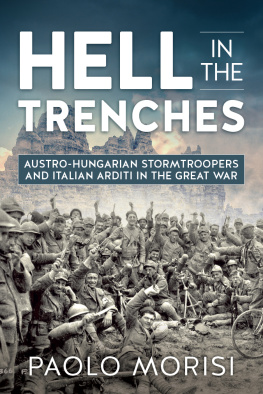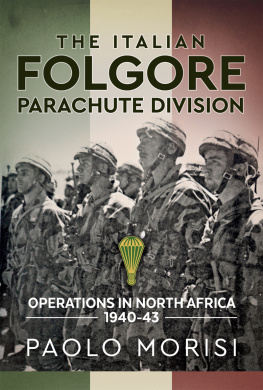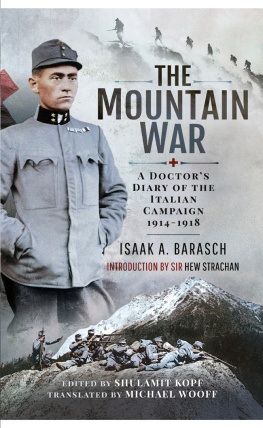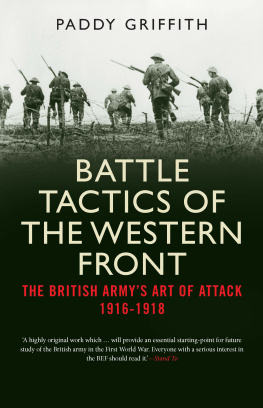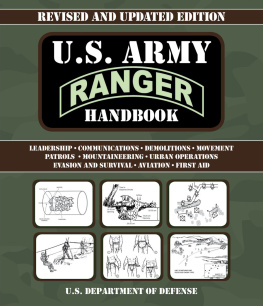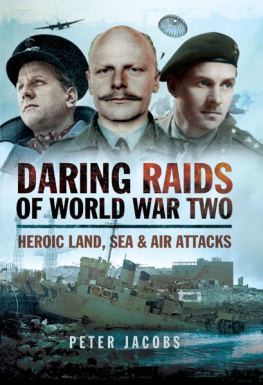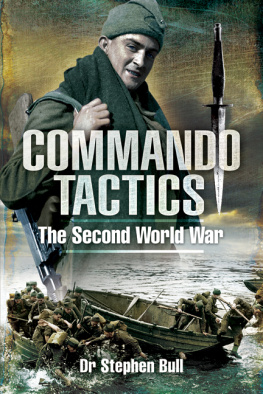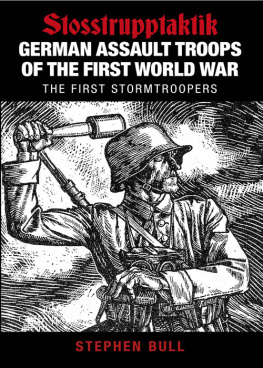
HELL IN THE TRENCHES
Austro-Hungarian Stormtroopers and
Italian Arditi in the Great War
Paolo Murisi
Helion & Company Limited
Unit 8 Amherst Business Centre
Budbrooke Road
Warwick
CV34 5WE
England
Tel. 01926 499 619
Fax 0121 711 4075
Email:
Website: www.helion.co.uk
Twitter: @helionbooks
Visit our blog http://blog.helion.co.uk/
Published by Helion & Company 2018
Designed and typeset by Mach 3 Solutions Ltd ( www.mach3solutions.co.uk )
Cover designed by Paul Hewitt, Battlefield Design ( www.battlefield-design.co.uk )
Text Paolo Morisi 2018
Images as individually credited
Maps drawn by George Anderson Helion & Company Limited 2018
Every reasonable effort has been made to trace copyright holders and to obtain their permission for the use of copyright material. The author and publisher apologize for any errors or omissions in this work, and would be grateful if notified of any corrections that should be incorporated in future reprints or editions of this book.
ISBN 978-1-912174-98-0
eISBN 978-1-912866-16-8
British Library Cataloguing-in-Publication Data.
A catalogue record for this book is available from the British Library.
All rights reserved. No part of this publication may be reproduced, stored in a retrieval system, or transmitted, in any form, or by any means, electronic, mechanical, photocopying, recording or otherwise, without the express written consent of Helion & Company Limited.
For details of other military history titles published by Helion & Company Limited contact the above address, or visit our website: http://www.helion.co.uk .
We always welcome receiving book proposals from prospective authors.
Introduction
During the first two years of the First World War the Italian Army fought a war of attrition against the Austro-Hungarians which was made even harsher by the cold climate of the Alps. In addition, its leadership lacked initiative and a clear strategy to win the war.
The eleven Italian massive offensive operations in the Isonzo sector (the so-called Battles of the Isonzo River) proved extremely costly, mainly because they lacked the vital element of surprise. The Italian doctrine of mass frontal infantry attacks in successive waves was both extremely outdated and costly in a war of positional warfare. Nevertheless, it was the only strategy that was tried again and again to break the Austro-Hungarians. The rather lengthy preparatory barrage showed where the infantry was planning to attack, often giving advance warning to the Austro-Hungarians who could shift reserves and equipment to parry the blow. In addition, two other factors inherent with this doctrine contributed to the failure of these offensive operations. First, the Italian artillery was often ineffective due to a lack of large field guns which were necessary in taking down enemy defenses, and once its infantry charged the enemy lines its offensive impetus was stymied by fully functioning barbwire works, blockhouses and machine gun nests. Second, the Italian Army lacked specialized assault troops that were capable of carrying out rapid and overpowering attacks against enemy trenches. In most cases the preparatory artillery fire would pre-warn the enemy of the impeding attack and once the successive waves of densely packed, slow-moving Italian infantry units reached the enemy barbed wire they would be mowed down mercilessly by the machine guns.
The Italians basically adopted the breakthrough tactics of the Western Front whereby with the concentration of artillery fire and infantry against one sector of the enemys defenses the army would attempt to make a major frontline breach. In most cases however, the Austro-Hungarians would pull back, reorganize their defenses to the rear of the frontline defenses and seal the infantry advance.
In contrast, beginning in 1917, the Austro-Hungarian troops were able to complete a number of surprise attacks and counter-attacks by using new German-inspired infiltration tactics and weapons, which in many cases yielded important results. These actions were often conducted by specialized assault patrols and battalions ( sturmtruppen ) which through daring and unexpected maneuvers would surprise and overwhelm the Italian defensive lines and penetrate deeply into their positions. These swift counter-attacks, preceeded by equally swift, pinpoint barrages, would often take back in one day the positions and territory that the Italian infantry had conquered through massive artillery and infantry deployments and at a great cost. The sturmtruppen tactics were based on a brief but very intense pinpoint artillery barrage, which forced the enemy to seek cover within their trenches and tunnels. These highly trained units would then advance under the cover of the artillery barrage in order to reach the first-line enemy trench. As the artillery lengthened its fire, the sturmtruppen , armed with hand grenades, knives, flamethrowers and light machine guns, would penetrate the enemy trench and begin neutralizing its major centers of resistance such as the machine gun nests. They would often throw hundreds of hand grenades, which were carried in large bags worn over the shoulders, often fooling the enemy infantry into believing that the artillery barrage was still in progress.
Their attacks relied heavily on the element of surprise, on flawless execution and detailed planning. The objectives were determined ahead of time through extensive surveys of enemy lines, often through the key contribution of aerial surveillance. Every assault patrol was assigned a specific task and each unit coordinated its assault with the other patrols. The sturmtruppen operations were so meticulously planned and so well orchestrated with artillery fire that they often succeeded in overcoming the resistance of the Italian infantry units thus allowing the Austro-Hungarians to retake possession of heavily contested positions.
The observation by Italian intelligence officers of the deeds of the sturmtruppen together with information on their weapons and training gleaned from interrogations of Austrian prisoners of war allowed the Italian Comando Supremo to take into consideration the impact of these stormtroops on the course of the war. Specifically, the Italian High Command remarked on the high degree of integration that had been achieved between artillery and infantry assault enemy units during raids and attacks. In addition, how the combination of innovative use of artillery batteries (rolling and creeping barrages) in conjunction with swift counter-attacks by specialized infantry detachments allowed the Austro-Hungarians to prevail in several major battles beginning in the spring of 1917.
As a result of these enemy tactics and by following the example of the Austro-Hungarian stormtroopers, the Italian High Command would initiate a profound reform of infantry tactics by creating new special assault units ( arditi ) and reorganizing its artillery which would in turn play a vital role in the final outcome of the war.
Thus the purpose of this book is to analyze the evolution of offensive infantry tactics on the Italian Front by focusing upon both the Austro-Hungarian sturmtruppen and the special Italian assault unit, the arditi . At the onset of the war both the Austro-Hungarian and the Italian Army were unprepared for a continental, long-term war of attrition. As the war progressed and despite several defeats, both armies improved their combat performance by increasing their ability to conduct successful offensive operations, mainly by altering tactics and by increasing artillery and infantry firepower. This book will analyze their military evolution and the changes made to improve battlefield capabilities in the changed environment of trench warfare.
Next page
